The History of Collegiate Shag
What is this dance all the kids are doing today called Collegiate Shag? Where did it come from and what is its history? The truth is that the history is very spotty, with very little documentation, and to make things worse the term "Shag" has come to mean various things, just like the term Jitterbug.
One of most popular dances in the United States today is called Carolina Shag, or (to many in that region) just "Shag". A handful of Carolina Shag enthusiasts over the past couple decades have documented its history and have almost always made the mistake of relating their new "Carolina Shag" to the Shag done previous. However, before we get into that, let�s start with square one with the term Collegiate Shag.
The term Collegiate was simply a descriptive term used to explain who, or the way a dance was done. For instance Collegiate Waltz, or Collegiate Fox Trot, simply put, this was the way the college kids did the dance. Not tied to any ballroom or studio standard or structure, but rather to whatever they felt was the way. This could be considered a rebellious type of dance, but not so much in that they just had their own way which was, or could have been, the trendy or cool way to do it. Different schools had there way to do things and this is what set them a part, however being done by this age group created the college set.
So now, we just have Shag. Where does this word even come from? Well, I know the word is in fact used in an 1890 book with the definition being a vaudeville performer. This definition of the term Shag continued to be used all the way into the 1920�s; however its definition changed to be more specific describing burlesque acts, and not just any vaudeville performer.
One of the most knowledgeable historians in this field is Lance Benishek. He reminds us that these vaudeville performers did a step called the Flea Hop which consisted of a step-hop which alternated right to left, and that it is very possible that Shag came from that. Certainly it is possible, but to me, the stretch of going from solo dancing to partner dancing, and using the solo step leaves us gaps in the history which are not documented enough to be convincing. If for instance there was some solo dancing in the 20's called Shag, then I'd find it more believable.
Let's put all this term history to rest for a second and let me introduce to you the first use of the partner dance called "The Shag�.
From my personal research (which comes from a Book called "Land of the Golden River" by Lewis Phillip Hall), during the winter of 1927 Lewis came up with a dance routine called "The Shag", and introduced this in August of 1928 in Wilmington, NC at the Pirates Festival. Then in 1930, Kay Keever who was married to band leader Jelly Leftwhich, who played at the dances, remembers singing in his band and jumping off stage to dance the Shag with Lewis Hall, and backs up Lewis� claim that he was the one that invented the dance.
Although, in the south there were contests every summer at various ballrooms from 1929, it did not make it to the newspapers until 1932. This is the first newspaper article I have that mentions the Shag:
July 22, 1932 - Ironwood Daily Globe
When the convention of dancing teachers opened at the Hotel New Yorker recently, an announcement was made that the Lindy Hop remained an outstanding ballroom dance. During the several days which elapsed, someone must have gone over the more recent dispatches. Toward the final session the statements read that the Earhart Hop would be "the thing".
This winter the Shag at eve will have its fill. The teachers have decided upon the Shag as one of their favorite dances. I'm told that it's a mild form of Tango and an improvement on the shuffle. Well the milder the better, so far as I'm concerned.
|
Followed closely by this advertisement two months later:
September 1, 1932 - Wilmington Morning Star
SHAG Dance contest to be held tonight at Wrightsville.
|
Was this the same Shag dance being done today or called the Collegiate Shag? No, it's not, but we are getting closer! This was the original Carolina Shag, or southern style Shag, which they simply called "Shag". Today some teachers refer to this Shag as being "Single Shag", and while it might look the same as Collegiate Shag, on closer look the footwork is actually different. In Single Shag the pattern of steps takes eight beats of music to complete, while Collegiate Shag only takes six beats of music to complete.
One of the most famous film clips of Shag is no doubt Arthur Murray teaching the Shag in 1937 with his students and performers. How did he find the dance? Well, it goes back to a dance called the Big Apple, and the original Big Apple dancers who all did the Shag, the southern version or single shag. This was their swing dance, and what they did when they "shined" or went into a circle to "jam".
Upon their arrival to New York with the national popularity of their Big Apple dance, Arthur Murray and one of his pupils Tom Gallagher took a trip to one of the most popular collegiate ballrooms called the Club Fordham. They discovered an entire crowd of Shag dancers, all doing the dance which we are discussing in this article. Well, it didn't take long for Arthur Murray to recruit dancers and a month or two later to come out with the video we know of today.
So that's it? 1937? Nothing earlier for this double or six-count Shag? Well, not necessarily. A dancer who I came to know as Connie Wiedell (who's real name was Conrad) brought this dance to Los Angeles in 1935, and I've known quite a few dancers that remembered that moment very well, as he first pulled up in his green Cord automobile. He became very famous in the Los Angeles dance scene as being a Shag dancer and appeared in films during the swing era, not to mention he taught a lot of dancers and it became his "style" or "look" of Shag that would forever become famous for being used in cartoons.
Connie was from Minnesota, and was working in a theater in 1934 when he learned to do the Shag from some professional dancers. These dancers were on tour doing a dance called the Peabody. On his way to Los Angeles he thought he would call the dance "Chicago Shag" to make is sound more exciting and also accepting with the new dancers he would be coming across, however, thankfully that term never stuck, which would have confused history.
In Southern California, the dance simply became a "step" for dancers to use in their swing dancing. Dancers such as: Maxie Dorf, Ricky Birch, Fred Christopherson, Hal Takier, and even Dean Collins. One of my favorite clips is from the movie Cabin in the Sky (featuring Duke Ellington's Orchestra). Ricky Birch, who was Connie's roommate at one time, comes in the club and jumps over a table with his partner before going into the Shag.
Today most dancers look at Connie Wiedell who dances in the beach clip (1940), Freddie and Betty Christopherson in 1937 adding Shag into their Swing, and Ray Hirsh and Patty Lacy in Blondie Meets the Boss (1939) and Mad Youth (1940). Also, there are some short clips of the Harvest Moon Ball which was held in Madison Square Garden. Between the years 1936 and 1939 it had a Shag division. Lastly, as mentioned before Arthur Murray's Shag video comes to mind as a great source, followed by Vitaphone shorts with Artie Shaw and Woody Herman. These are just a few of the clips that have become famous for today�s dancers.
Collegiate Shag is one of those dances that almost just seems to appear out of now where, becomes the most popular dance for kids for a few years and then disappears. Obviously these kids in their saddle shoes, who laid claim to doing this dance, grew up and learned sophistication in dance was more important than hopping around the floor . . . that and the music they loved took a back seat to new music forms that did not fit the swing mold.
My personal opinion is the dance came from Turkey Trot which was a basic step for the Tommy dance. We know from film this dance was based on a step-hop, step-hop. When the quick-quick came in we don't really know; however, during WWI the Two Step became a huge hit across the country, which at least explains the possibility of adding a variation of timing, which here means adding a quick-quick or step-step alternating feet. In the Turkey Trot we see the same posture, turns and patterns. The earliest I have this on film is 1914; however, oral history of interviews puts the dance at least five years earlier. It was Al Jolsen that discovered these dancers and brought them from San Francisco to New York around 1914, which helped spread the dance�s popularity on both coasts.
We've also heard dancers claim that the Turkey Trot or Texas Tommy helped influence the Lindy Hop. I for one don't accept that without a grain of salt, but if that's possible, then certainly it makes a lot more sense that it helped influence the Shag, if not created it.
Written by Peter Loggins
For more stories about jazz and swing dances, check out Peter's Blog: The Jassdancer
Or discuss the history of your favorite dance at dancehistory.org.
|
|
HOW TO BECOME A GOOD DANCER (1938)
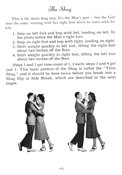
Page 185: The Shag
LIFE MAGAZINE
NOVEMBER 1937
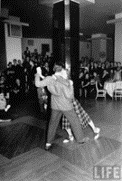
Life Goes To A Party
CHICAGO TRIBUNE
1938

With Saddle Shoes
LIFE MAGAZINE
DECEMBER 1, 1937

Princess Brinda with Arthur Murray
ARTHUR MURRAY'S
SHAG (1937)

Short Film on the Shag
JITTERBUGGING ON VENICE BEACH 1938
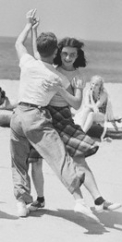
Connie Wiedell
LIFE MAGAZINE
NOVEMBER 1937
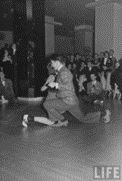
Life Goes To A Party
HOW TO BECOME A GOOD DANCER (1938)
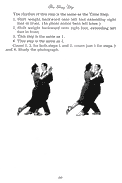
Page 186: The Shag Dip
|


